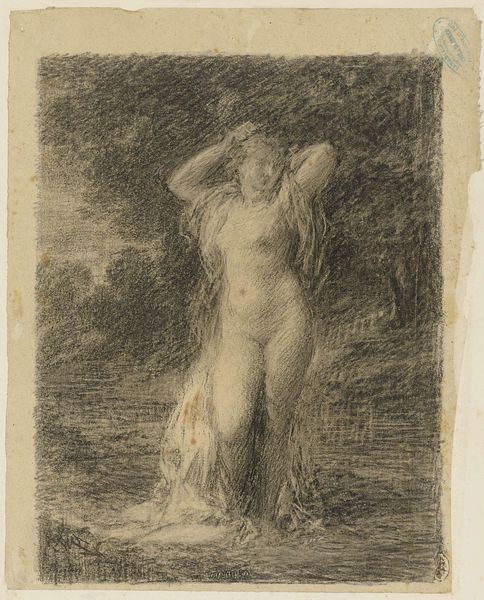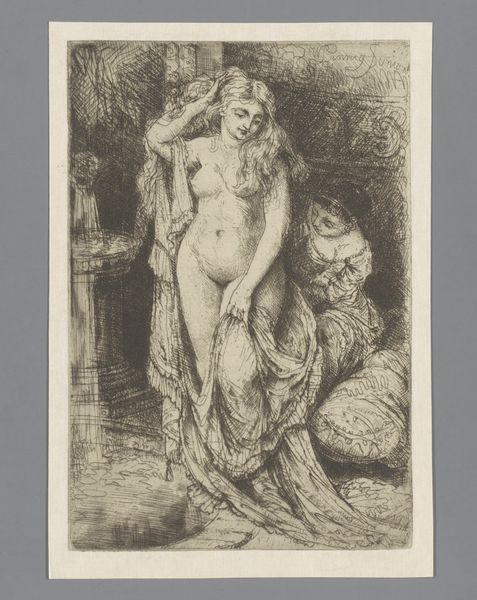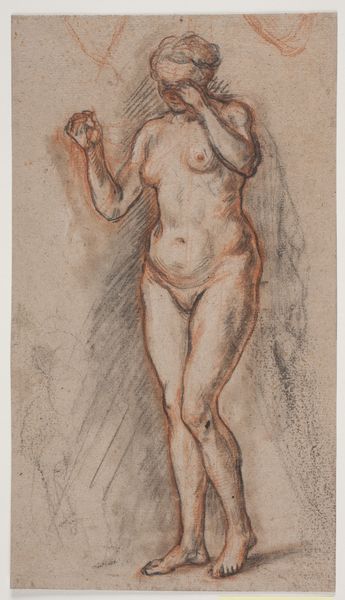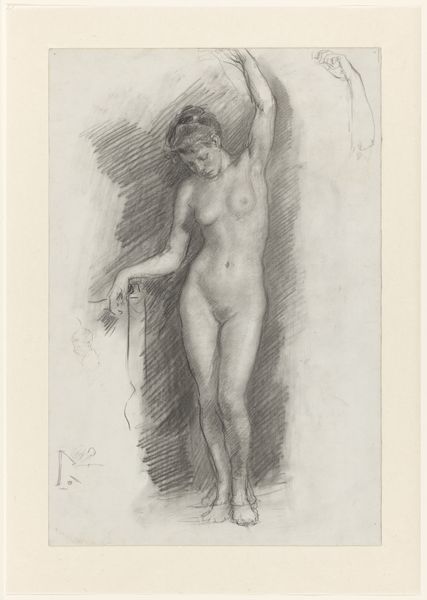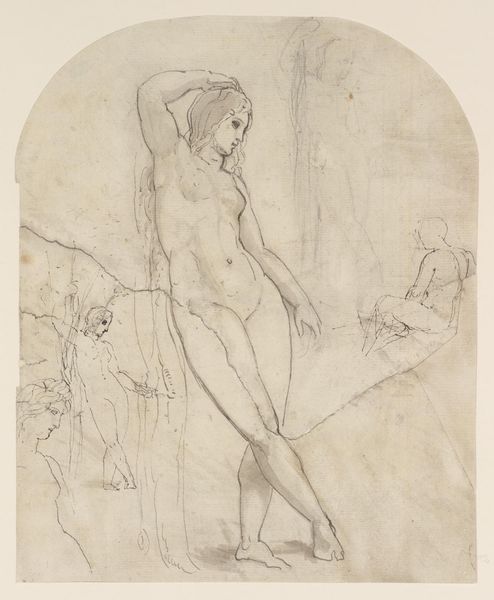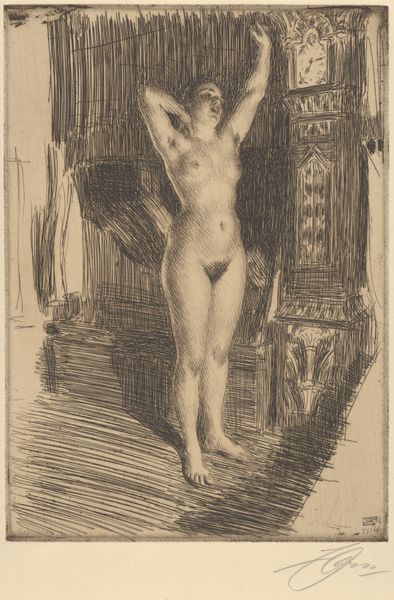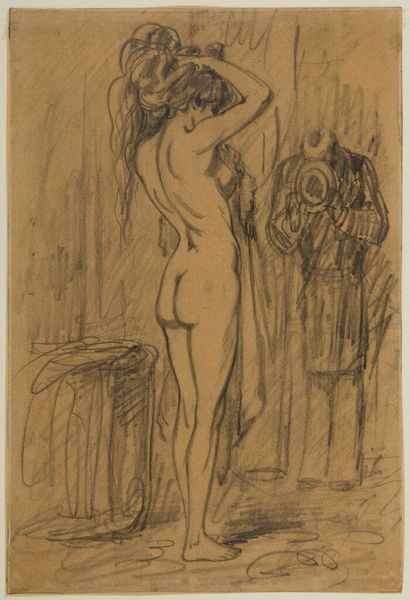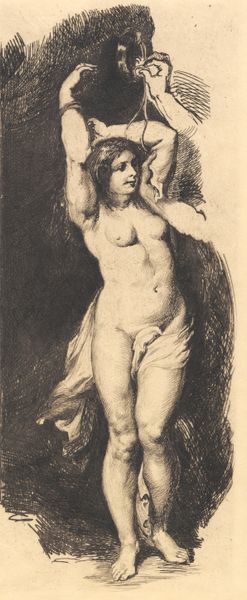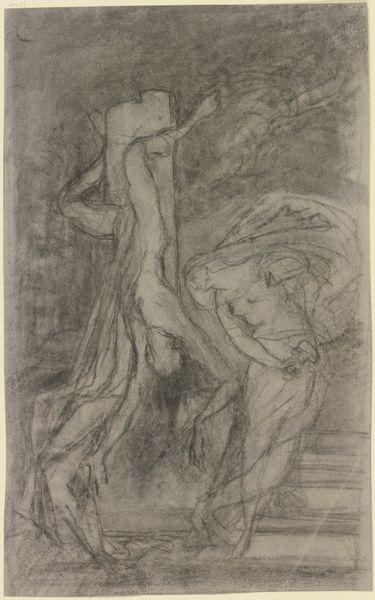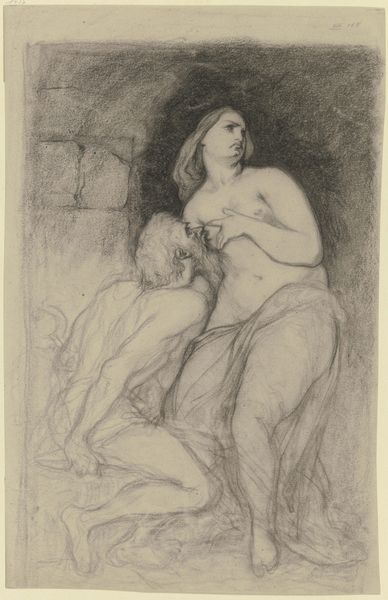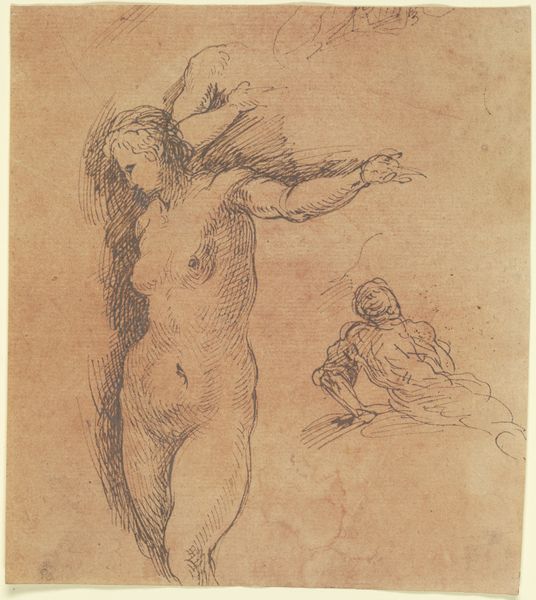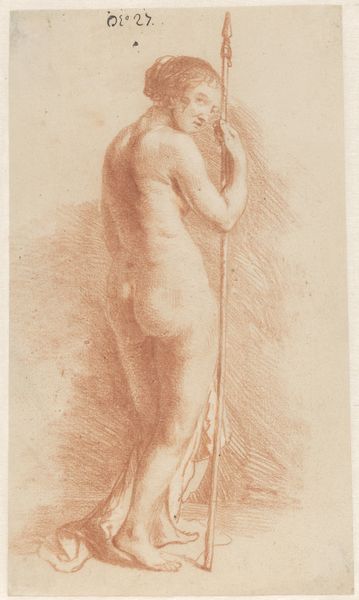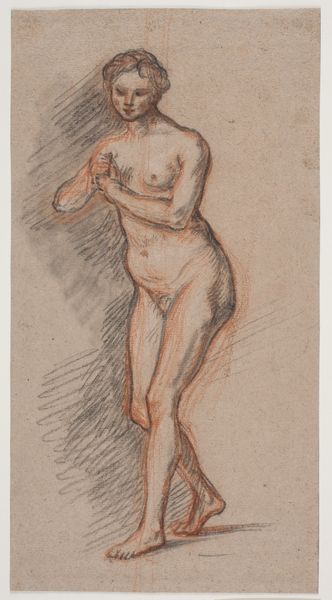
Dimensions: 190 × 130 mm
Copyright: Public Domain
Curator: Let’s discuss Gabriel de Saint-Aubin’s "Pandora," a drawing created in 1767 and currently residing here at The Art Institute of Chicago. It's crafted using charcoal, chalk, pencil, pen, and ink on paper. Editor: It’s immediately striking. The rendering is loose, almost ethereal. You sense a story unfolding, but there's also an ambiguity in its sketch-like quality. Curator: Observe how the artist has used varying line weights to create depth and shadow. The figure of Pandora is rendered with relative precision, especially in the torso and the turn of her head, yet she is also embedded within what seems to be the hatching representing dark billowing smoke. There’s a compositional tension created by that contrast. Editor: Absolutely. Pandora herself is, of course, a figure of myth. Her box – really a jar, *pithos* in Greek - contained all the evils of the world. To see her here, seemingly hesitant with her hand raised to her face is powerful. It makes me consider the enduring psychological impact of that tale of lost innocence. Curator: The symbolic weight of her action is intensified through formal contrast. Look closely at the treatment of her gaze; Saint-Aubin deliberately refrains from rendering it. Editor: A deliberate obscuring. A void. But it enhances the drama, no? That shadowed space implies the weight of what is, or what is about to be. Even that single column standing beside her takes on significance. It is not so much architectural support as a witness and reminder of a former, classical order now crumbling. Curator: We find ourselves suspended in that moment of anticipation. The artist plays with the notion of contained form versus chaotic line. I wonder how contemporaries viewed this study given the emerging styles of the day, with artists beginning to reject the traditional strictures and move toward bolder expressions of individualism. Editor: It certainly feels ripe with interpretations that connect to both its own time and our present anxieties. The potent idea of unleashed consequences – personally or universally – resonates regardless of era. Saint-Aubin truly manages to elevate what might be a sketch to something enduring and evocative. Curator: It leaves you to contemplate where these lines are ultimately meant to take us in meaning, a journey worth continuing well after our viewing is done.
Comments
No comments
Be the first to comment and join the conversation on the ultimate creative platform.
